Rhineland Pattern
This pack was probably the culmination of a mixture of designs from 19th century Germany which emerged as one of Dondorf's more popular house patterns by around 1900.
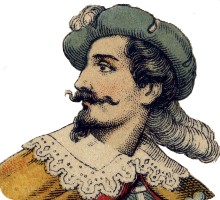
Dondorf: “Rhineland Pattern”
...a Dondorf House pattern.
This pack was probably the culmination of a mixture of designs from 19th century Germany which emerged as one of Dondorf's more popular house patterns by around 1900. The four Kings each have white wavy hair and beards, giving rise to the nickname “Jewish Pattern”. Its popularity was increased by its being widely used and copied by Austrian, Belgian, Dutch, Polish, Portuguese and other manufacturers, some of whom created new variants. Some versions have scenic Aces (historical or geographical) which vary from pack to pack; others have plain Aces. The pattern continued to be produced after the takeover by V.A.S.S. in 1933.
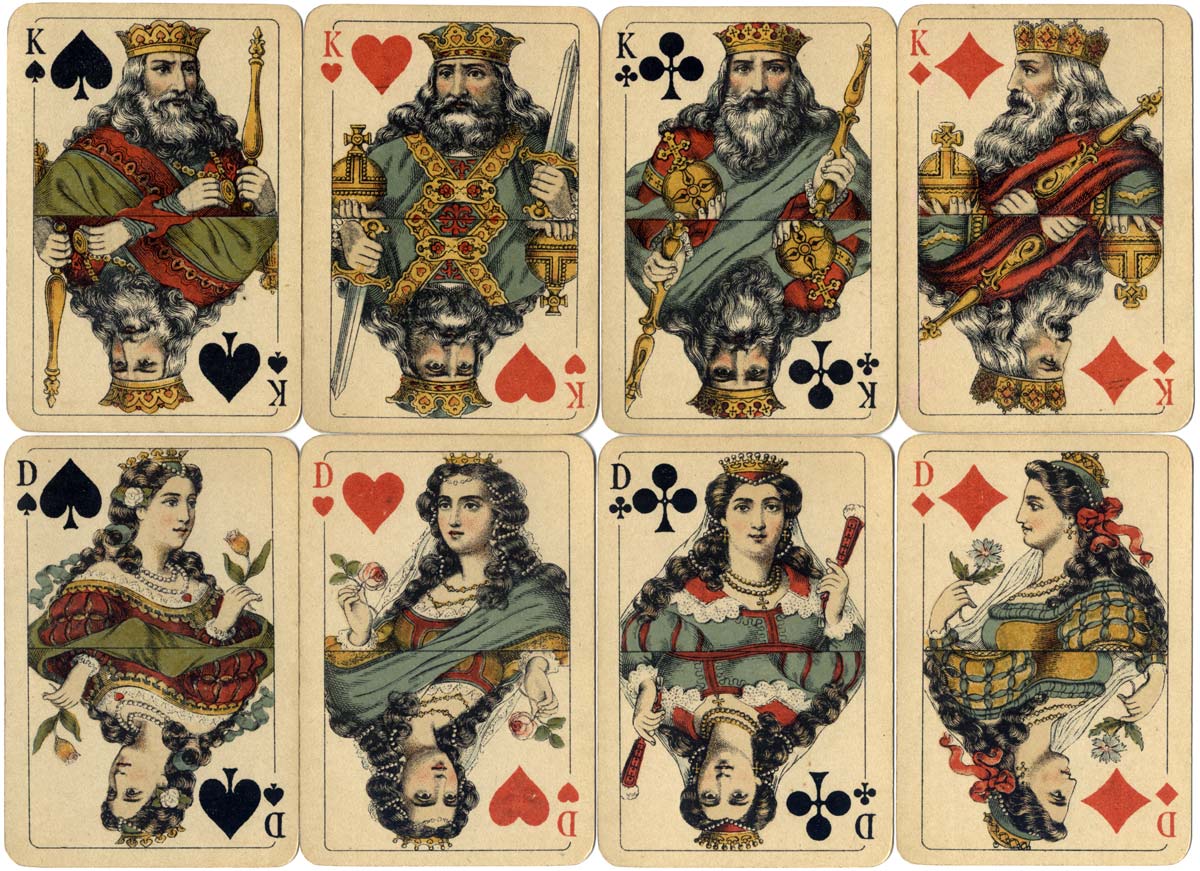
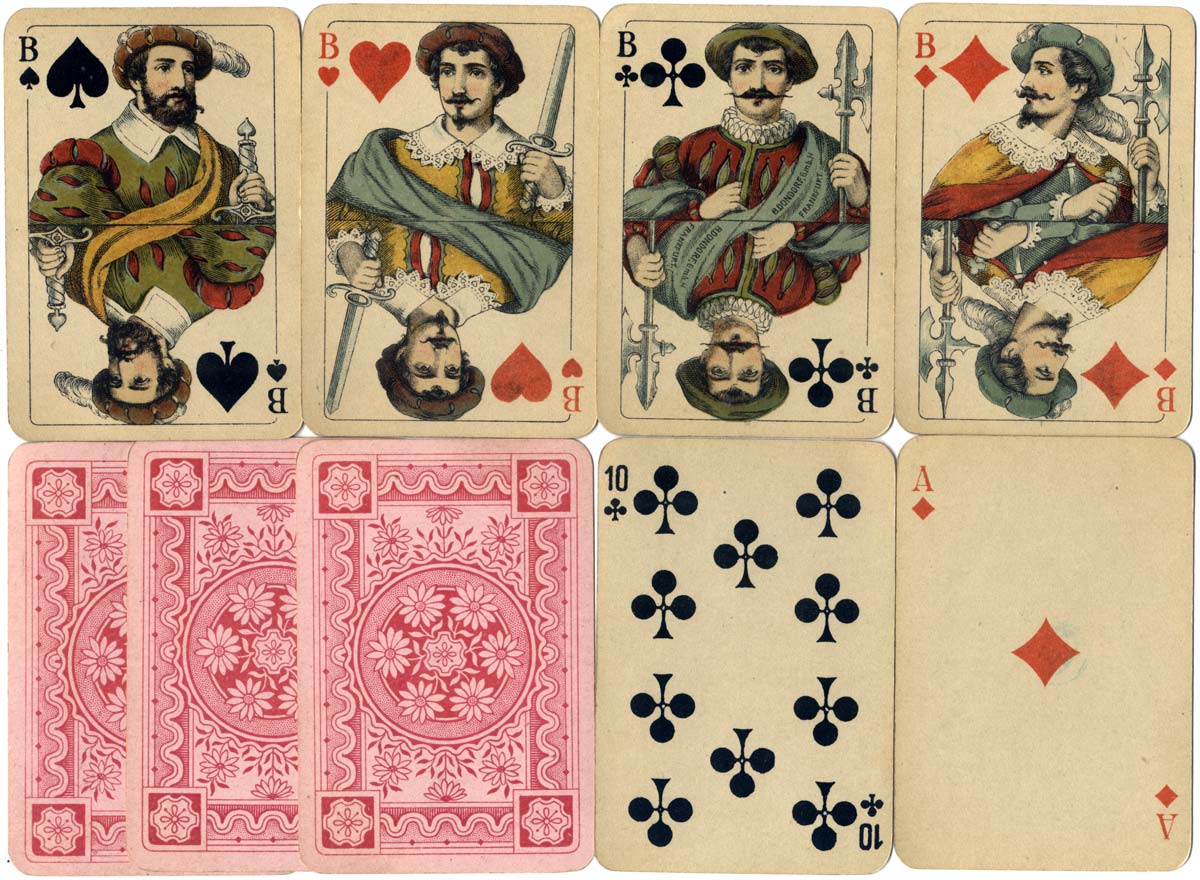
Above: Whist No.122 manufactured by Dondorf GmbH, c. 1910, sometimes referred to as “Jewish Pattern” because of the Rabbinical look of the bearded Kings. This example of the “Rhineland Pattern” has plain Aces.
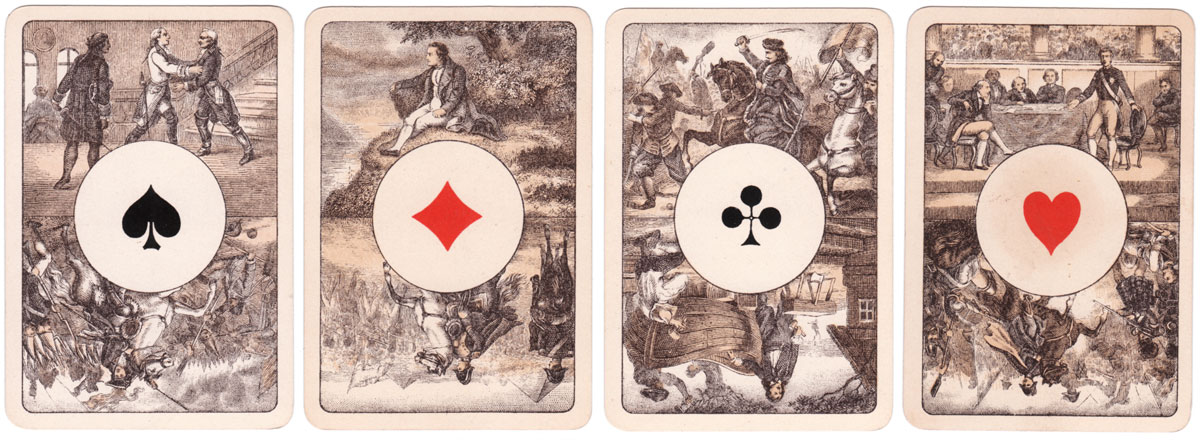
Above: this slightly earlier example of the “Rhineland Pattern” with no indices has special Aces for Java showing scenes are of Dutch history (click to see up-side-down). Images courtesy Rex Pitts.
Rhineland Pattern by KZWP, 1980s


Above: Rhineland pattern with English indices printed by KZWP, c.1986. The ace of hearts has a different font for the indices, and has four indices while the other cards all have two. Housed in an unmarked silk-lined bridge box with no indication of a brand name. Image courtesy Matt Probert.
Rhineland Pattern by F. X. Schmid for The Netherlands, c.1990
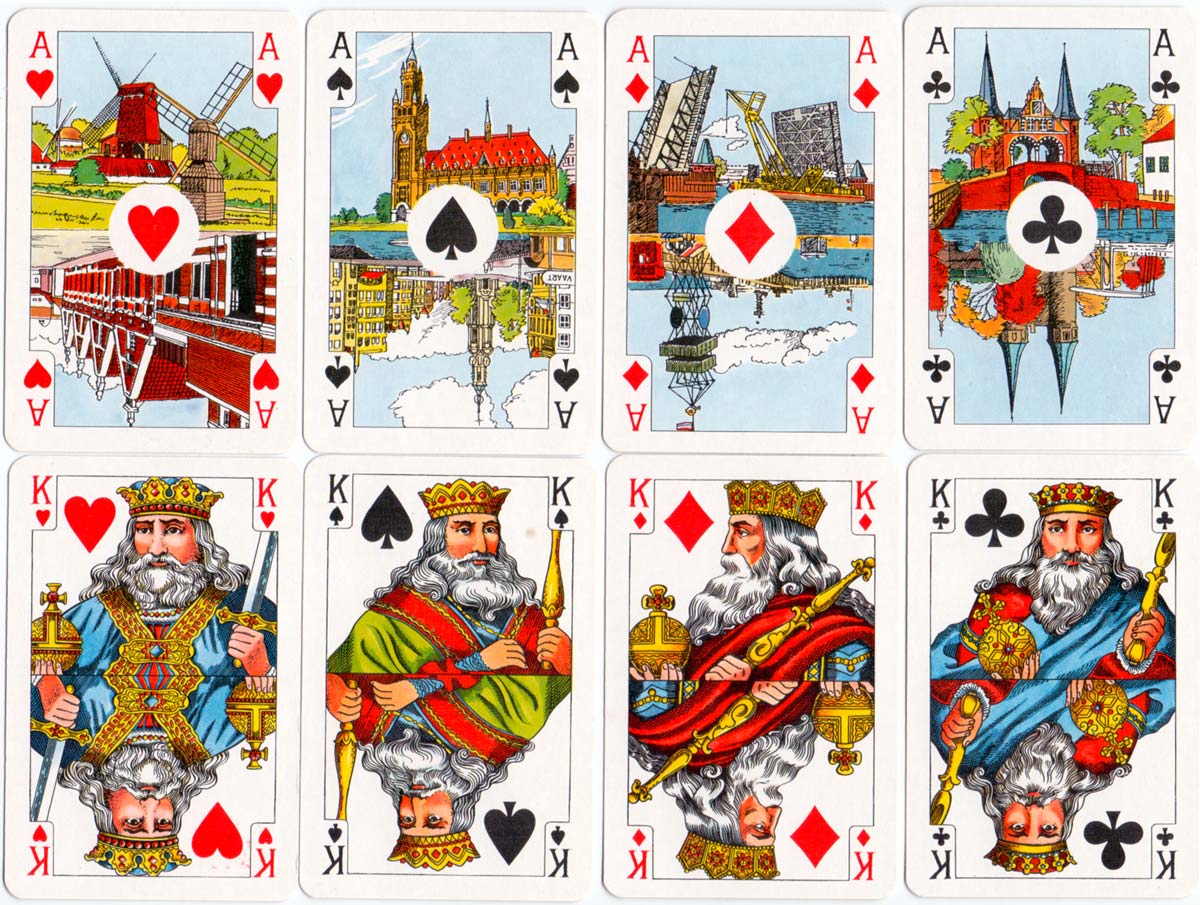
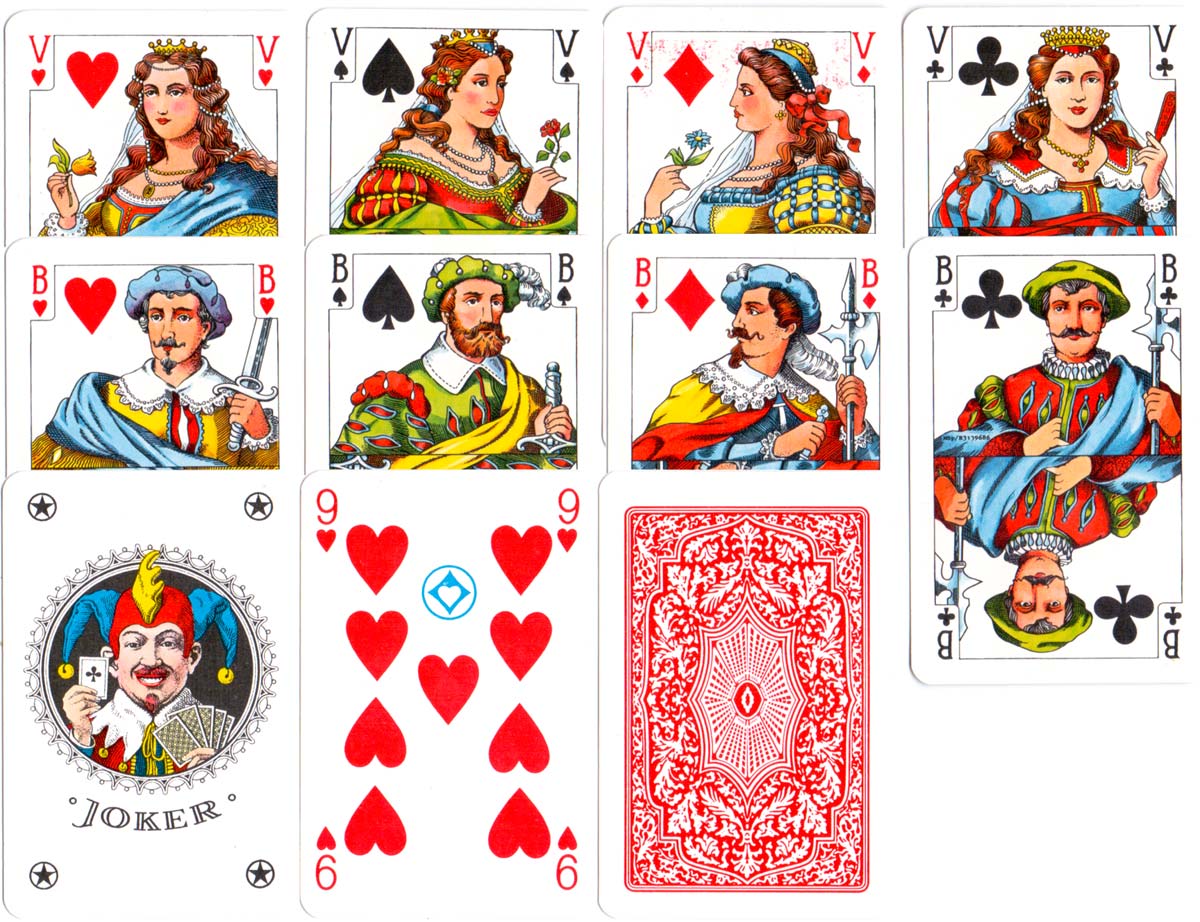
Above: Rhineland Pattern for The Netherlands by F. X. Schmid, c.1990.
Rhineland Pattern by Ferd Piatnik & Söhne, Vienna, 1996
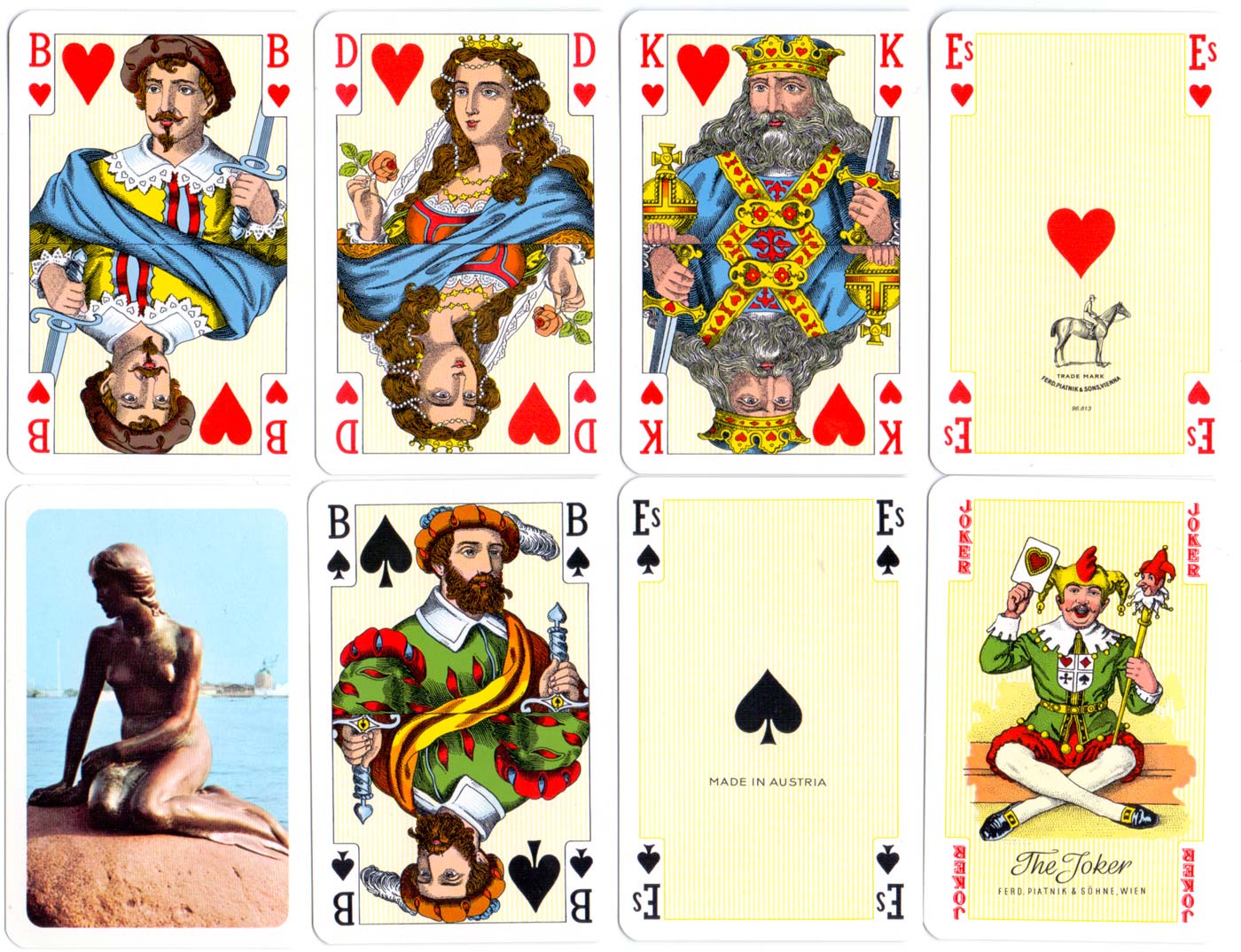
Above: Rhineland Pattern for Copenhagen by Ferd Piatnik & Söhne, Vienna, 1996.

By Rex Pitts (1940-2021)
Member since January 30, 2009
Rex's main interest was in card games, because, he said, they were cheap and easy to get hold of in his early days of collecting. He is well known for his extensive knowledge of Pepys games and his book is on the bookshelves of many.
His other interest was non-standard playing cards. He also had collections of sheet music, music CDs, models of London buses, London Transport timetables and maps and other objects that intrigued him.
Rex had a chequered career at school. He was expelled twice, on one occasion for smoking! Despite this he trained as a radio engineer and worked for the BBC in the World Service.
Later he moved into sales and worked for a firm that made all kinds of packaging, a job he enjoyed until his retirement. He became an expert on boxes and would always investigate those that held his cards. He could always recognize a box made for Pepys, which were the same as those of Alf Cooke’s Universal Playing Card Company, who printed the card games. This interest changed into an ability to make and mend boxes, which he did with great dexterity. He loved this kind of handicraft work.
His dexterity of hand and eye soon led to his making card games of his own design. He spent hours and hours carefully cutting them out and colouring them by hand.
Trending Articles
Popular articles from the past 28 days
Related Articles
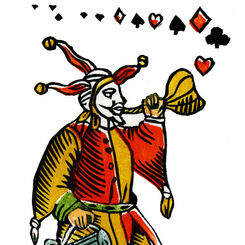
Woodblock and Stencil Joker
A limited edition art print of the 1984 woodblock joker.
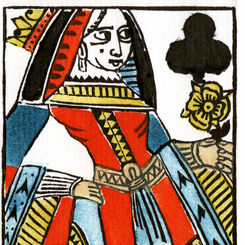
Woodblock and Stencil Queen of Clubs
A limited edition art print of the Queen of Clubs 1984 woodblock joker.
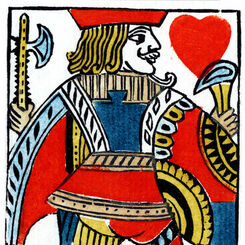
Woodblock and Stencil Jack of Hearts
A limited edition art print of the Jack of Hearts 1984 woodblock joker.
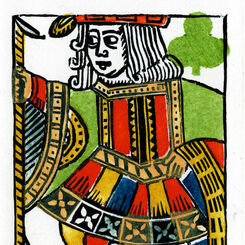
Woodblock and Stencil Jack of Clubs
A limited edition art print of the Jack of Clubs 1984 woodblock joker.
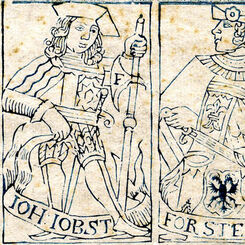
Uncut Sheet by Johann Jobst Forster
A proof sheet containing twelve court cards of conventional French type.
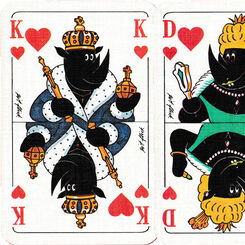
Mit Rhino auftrumpfen
Black rhinos on a publicity pack for Armstrong, a flooring company, with comic designs by Pit Flick....
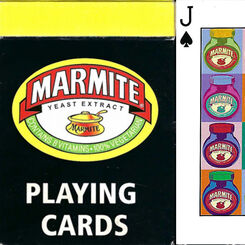
Marmite
Fifty-Four images celebrating a UK savoury spread, that has been around one hundred and twenty two y...
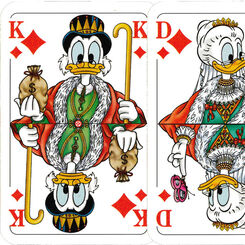
Walt Disney Cards II
Mickey, Minnie, Pluto and other familiar Disney characters.
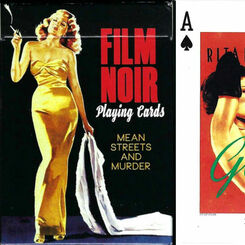
Film Noir
A deck of 55 cards, celebrating hard boiled heroes, wise-cracking women, mean streets, guns and gums...
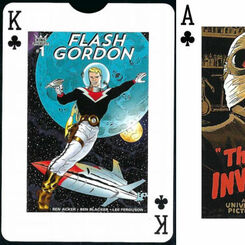
Science Fiction
A deck of 55 cards, celebrating a time when Science Fiction truly was, Science Fiction.
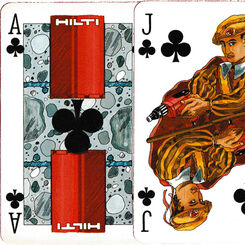
Hilti I
Promotional pack for Hilti power tools, with courts in medieval costume and non-standard pips.
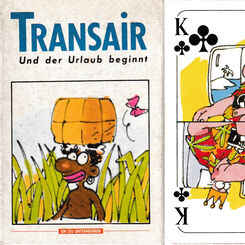
Transair
Humorous designs promoting Transair, a German charter flight operator.
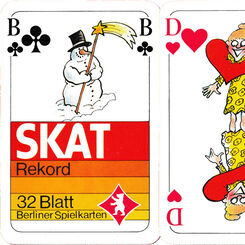
Merz Pharma Skat
Comic designs promoting Merz Pharma, a German drug company.
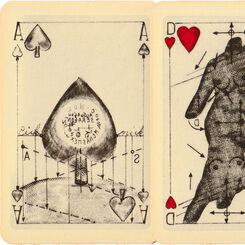
escART, ec-ART, SKAT
Fully illustrated pack printed from etchings by Johannes Vennekamp.
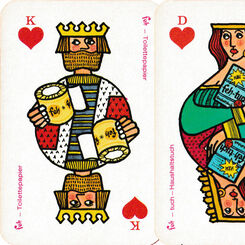
Feh Schnapskarten
Colourful promotional pack for Feh household and toilet papers.
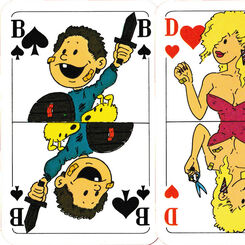
Hansaplast®
Advertising pack for Hansaplast, with comic courts sporting sticking plasters.
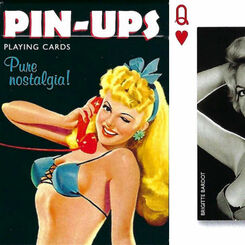
Pin-Ups
A deck of 55 cards celebrating a golden age of cheeky, naughty, bold and curvy ladies in film.
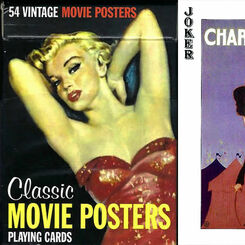
Classic Movie Posters
A deck of 55 cards presenting vintage classic movies and their stars.
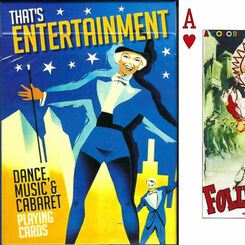
That’s Entertainment
A deck of 55 cards celebrating 20th Century vaudeville, musicals and cabaret.
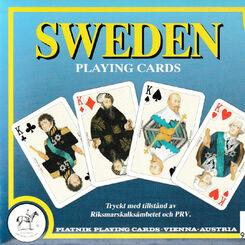
Sweden playing cards
Named characters from Swedish history.

Romania playing cards
Romanian voivodes and their wives from the 15th and 16th centuries.
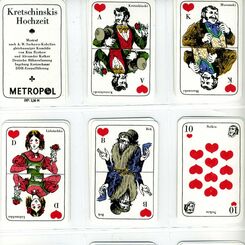
Wedding of Krechinsky • Свадьба Кречинского
A pack of cards depicting characters from the famous play "The Wedding of Krechinsky" by Sukhovo-Kob...
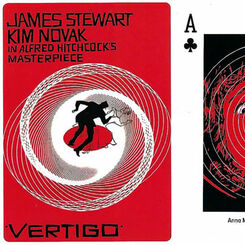
Hitchcock
A deck of 55 cards celebrating the master of mystery, murder and mayhem, Alfred Hitchcock.
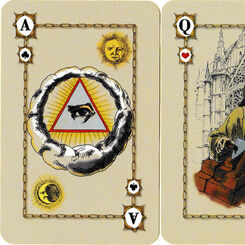
Freimaurer Spielkarten / Masonic playing cards
Masonic playing cards created by Ivan Wojnikow, 2004.
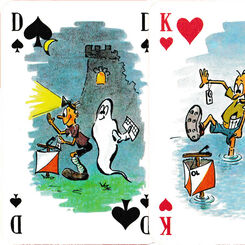
Orientierungslauf Skat
Humorous designs by Helmut Härtelt on the subject of orienteering.
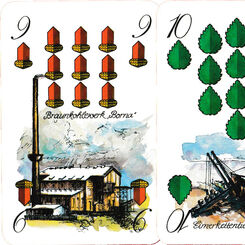
Borna Skat
Publicity pack for the Saxon town of Borna, with designs by Andreas Wachter.
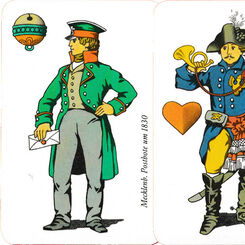
Postgeschichte
A celebration of different postal systems in Germany from 1630 to 1850, with designs by Volker Hartm...
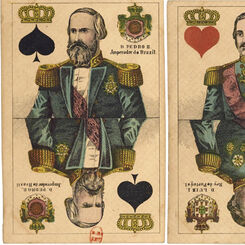
Kings and Queens of Brazil & Portugal
Historical playing cards by C. L. Wüst depicting monarchs of Brazil and Portugal.
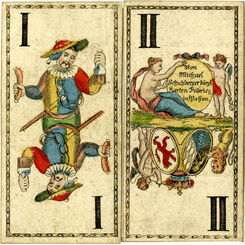
Mythological tarot by Michael Schatzberger
Mythological tarot by Michael Schatzberger, Passau, Bavaria, early 19th century.
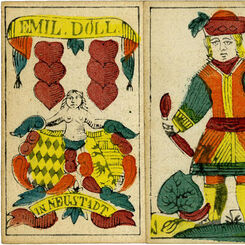
Ansbach pattern by Emil Doll
Later Ansbach or Nürnberg pattern by Emil Doll, Neustadt.
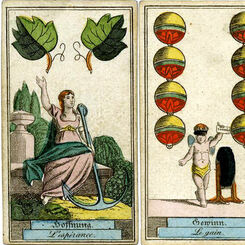
Cartomancy deck by Johann Ernst Backofen
German-suited Cartomancy deck published by Johann Ernst Backofen, Nürnberg.
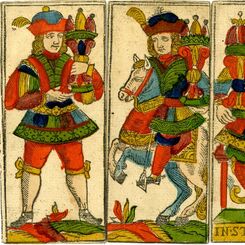
Trappola pack by Joseph Fetscher
Trappola pack published by Joseph Fetscher, Graz, 1739.
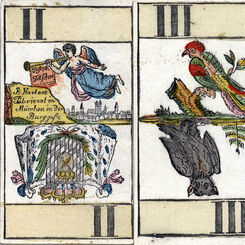
Animal Tarot by Joseph Fetscher
French-suited Natural History Tarot deck by Joseph Fetscher, Munich, c.1820.
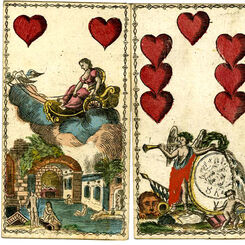
Heathen Wars
German-suited ‘Heathen War’ playing cards published by Joseph Fetscher, Munich, c.1820.
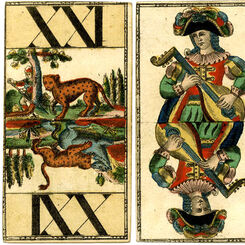
Mythological and Allegorical tarot
Mythological and Allegorical tarot produced by Peter Paul Fetscher junior, Munich.
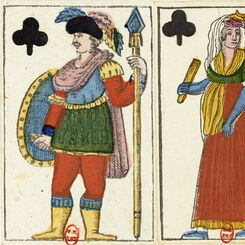
Fantasy deck by Joseph Fetscher
Fantasy French-suited pack produced by Joseph Fetscher, Munich, c.1825.
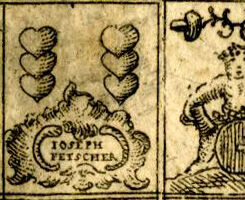
Miniature playing cards by Joseph Fetscher
Uncut sheet of miniature Bavarian playing cards by Joseph Fetscher.
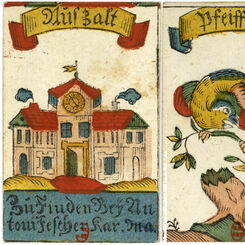
Vogelspiel
Vogelspiel, a German card game known as the “cuckoo game” also known as “Gnau”.
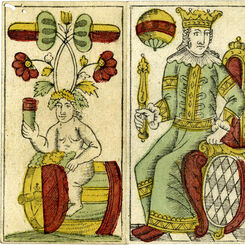
Bavaria pattern
Classic German-suited Bavarian pattern by Joseph Fetscher, Munich, early 19th century.

Animal Tarot by Andreas Benedict Göbl
French-suited Animal Tarot deck produced by Andreas Benedict Göbl, Munich.

Standard French-suited Bavarian deck by Göbl
French-suited Bavarian deck by Andreas Benedict Göbl, late 18th c.
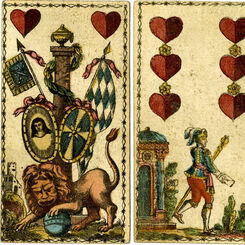
Historical playing cards by Joseph Fetscher
Historical playing cards by Joseph Fetscher, Munich, c.1820.
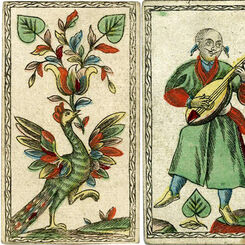
Illustrated piquet cards
Bavarian piquet cards with oriental illustrations produced by Andreas Benedict Göbl, Munich, late 18...
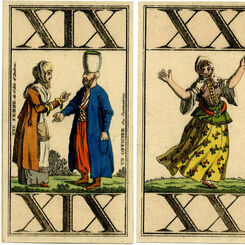
Costumes of Turkey Tarot
‘National Costumes of Turkey’ tarot by Industrie Comptoir, Leipzig, c.1800-1825.


